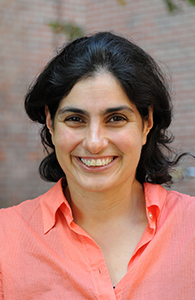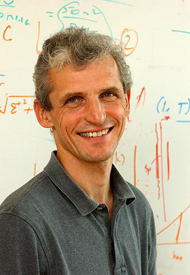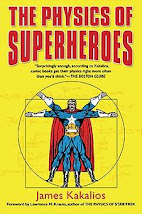The Physics Teacher -- May 2009 -- Volume 47, Issue 5, pp. 272 Online Publication Date: Apr 2009 Full Text: Read Online (HTML) | Download PDF | ||
Show Abstract | ||
Show PACS |
The YouTube Makeup Class
David G. Haase
North Carolina State University, Raleigh, NC
Contents
When a college instructor goes out of town and must miss a lecture, the standard options are to cancel the class meeting or to enlist a colleague to fill in. In the former case a teaching opportunity is lost; in the latter the substitute may not lead the class in the same way as the instructor. Some students routinely skip lectures by a guest instructor, in the belief that the material in the substitute lecture will not be covered on the exam. There are other makeup options such as a directed study assignment. For instance, a missed class is sometimes a good opportunity to require students to investigate web-based simulations such as Physlets® that illustrate the class topics. These are most effective if the students are given a clear structure and if there are questions that the students must answer from their investigations with the Physlets. But many students are more comfortable with the audio and visual communication that occurs in the classroom. Web 2.0 technology, e.g., YouTube (http://www.youtube.com), makes it convenient for faculty to upload videos of lectures and demonstrations that can be used for makeup classes. College students already use YouTube for entertainment, and the YouTube format is simple to view on any web-connected computer. Although some universities have highly developed media delivery systems, YouTube is extremely convenient and accessible by anyone. This paper discusses how a YouTube makeup class can be efficiently produced and structured to be an effective learning experience.1
The basic idea is to transfer a regular lecture into a set of smaller videos that are the basis for a lesson. The videos should be easy to make and of a quality appropriate for one-time use. Other questions and activities can be linked to the videos to produce a coherent lesson.
For example, in a recent case I began with the lecture notes that I would have used in person. The lecture was recorded in one take. I set up a video camera near eye level and about eight feet from the class whiteboard. The camera focused on a 3.5-×-3.5-ft square that was outlined on the whiteboard. The microphone on the camera itself captured the sound. I then gave the lecture as if the camera was one of my students. At the appropriate break points, such as going from a theory to working an example problem, I walked away from the board for a few seconds. This makes it easier to edit the tape later. At the end of this process I had about 50 minutes of video, which was then downloaded to the computer.
There are two parts to the production of the final YouTube video from the lecture tape:
1) edit the lecture into smaller sections, which are saved in a format to load to YouTube, and
2) upload the section files to YouTube.
In my case I downloaded the taped lecture through a firewire connection to iMovie HD on a Macintosh. The standard 50-minute lecture can be broken into thematic sections or “chunks.” For instance, one chunk might be a demonstration or an exposition of a theory and the next chunk the working out of an example or problem. In iMovie HD the video was broken into chunks of 10 minutes or less, as strongly encouraged by YouTube, by cutting at the blank screen sections. This turned out to be a very natural way to break up the lecture. The final product was five chunks totaling about 40 minutes. Each section was rendered and saved on the Macintosh in MPEG-4 format, 320 × 240 QVGA, and 30 frames/second. In each video the writing on the board was easily legible and the sound clear. A simple title pane was added to the front of each video. Then iMovie HD rendered the 10-minute video into a 26-MB file in less than 10 minutes.The lecturer should think of the video process as making a disposable video, good enough for the present purpose but not having high production values. The instructor speaks directly to the camera. This presentation mode addresses the viewer more personally and is more inviting than a video of a regular classroom lecture. The style is more like that of a TV weatherman than of a professor leading a class. In editing, no attempt was made to clean up mistakes. Trying to do better takes too much time and does not increase the value of the video for the educational task.
YouTube requires the user to acquire a free account and password before the video files can be individually uploaded. The upload time was about five minutes for a10-minute video. Within a few hours, YouTube processes the file and makes it available for viewing. The user can keep track of the files in the “MyVideos” section and observe the number of viewers and viewer ratings, if any. YouTube does offer the choice of a video being private (limited to a set of less than 25 viewers) or public to the world. Also, code is provided so that the video may be imbedded in a web page.
Due to the Family Educational Rights and Privacy Act (FERPA), there are issues in uploading university course materials onto a public web server such as YouTube. The instructor should not mention any student names or show students on the video. To avoid spamming, inappropriate reviews, or similar problems, it is good to make the video titles relatively anonymous, to not mention the instructor or university name, and to display each video only for a limited time.
The entire process of producing a one-hour lecture is about one hour for filming, one hour for editing, and less than two hours for rendering and uploading. Therendering and uploading can be done in background on the computer. For the makeup lesson, the students were sent an email that introduced the lecture, and gave a list of the URLs for the videos and a question for the students to answer in their notebook after each video. Students were told that there would be a one-question quiz on the topic at the next lecture and that the videos would be removed from YouTube at that time.
How does this process go over with the students? One diagnostic is the number of views, as recorded on YouTube. For a 47-student class, the five videos for one lecture had 63 to 111 views each. This is evidence that most of the students watched the videos and some reviewed sections more than once. One student remarked, “I got to replay topics I didn't understand.” In the following class meeting, the students were asked to rate the usefulness of the makeup video class. On a scale of 1 (least useful) to 5 (most useful), the average rating was 4.3. There were several unsolicited positive comments about the videos. The students seemed ready todiscuss the topic in the next face-to-face meeting and did reasonably well on the quiz. Some of the students had even taken notes on the videos as if they were a live lecture.
It is clear that YouTube offers the possibility of Just-in-Time videos for makeup classes or even for working out particular questions or derivations that could not be covered in the class. A structured lesson built around homemade videos can be delivered via email or a web page. The production time for the lesson ends up being about three to four times the length of the video.
REFERENCES
Reference
- Sample videos can be found by Googling youtube dghaase01. The most-viewed example is: http://www.youtube.com/watch?v=1ID8Wm7mJDE&feature=channel_page. first citation in article
About the Author
David Haase is a professor of physics at North Carolina State University. He has taught several television and web-based distance learning courses as well as many introductory-level physics lectures.Department of Physics, North Carolina State University, Raleigh, NC 27695-8202; David_haase@ncsu.edu









